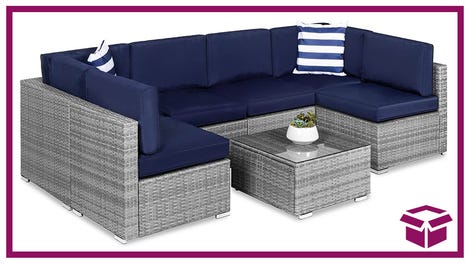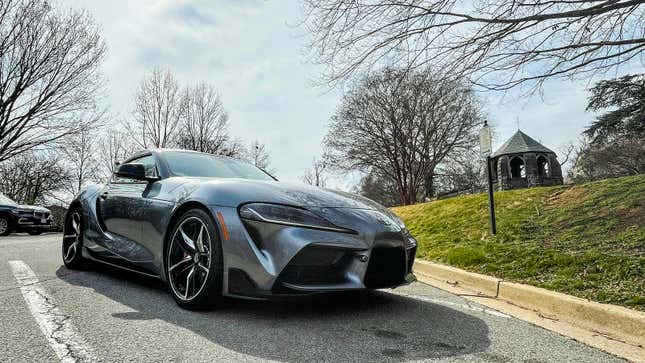
Last week, Lalita Chemello and I embarked on a journey to Skip Barber Racing School at Virginia International Raceway to learn how to be fast on a track. Getting there proved a weird excursion, because we each separately flew to Dulles Airport — short flights for both of us but especially me, who was only in the air for all of 30 minutes — so we could pick up a car to then drive another four hours to Danville, near the track. Why did we do this? Because we were picking up a Toyota Supra.
This was not the ideal adventure to really get the most out of a Supra. While we were in the car for more than 10 hours all told, the vast majority of that was highway driving. In Virginia, no less — a state that takes the Monopoly approach to incarceration when it comes to speeding. And no, we weren’t allowed to take it on the track. We asked.
What do you do with a 382-horsepower, rear-wheel-drive sports car on a long, mostly straight, and otherwise sleep-inducing drive? You feel a little like the point has flown clear over your head, like you’re wasting a golden opportunity. Of course, we did head off the beaten path and dip into wrinkled ribbons of asphalt here and there, and the roads closest to VIR proved the best for enjoying the Supra.

I should say our tester was a 2022 model. I never drove Toyota’s first stab at the A90, but it had a reputation for causing drama. The tweaks later made to the adaptive suspension, stability control systems, differential and chassis rigidity must have helped, because ours never once felt wobbly on those back roads, let alone the interstate. Steering was always confident, precise and firm.
Nevertheless, such a glorious mismatch of tool and mission inevitably causes you to start paying attention to different things. Like how well-suited a vehicle like this really is for long distances; like how strange an interior can be, particularly when it hasn’t been designed by the company whose badge appears on the steering wheel.
Lalita and I both had ample opportunity to drive the Supra, and we each remarked on how surprisingly compliant it was throughout the entirety of our journey. Granted, she hails from Michigan — a place where paved roads may as well not be — and I drive a Fiesta ST as my daily. We have low bars for comfort, and the Supra cleared them all effortlessly. I actually found it easier to see out of than my shoe-sized hot hatch, which surprised me. Also, my lower back and butt normally get sore in any driver’s seat after about two hours, but I’m only now realizing that never once happened in the 500-plus miles I was behind the wheel.
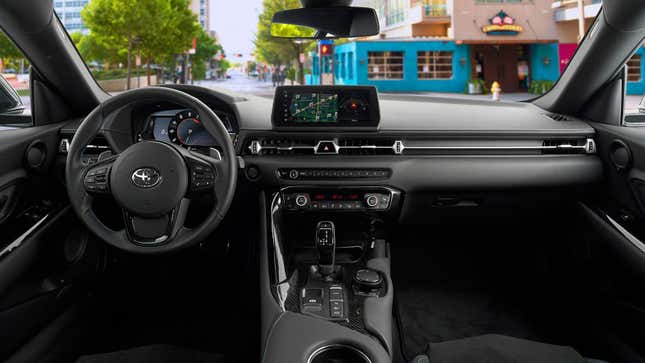
It’s a surreal experience sitting in the Supra for reasons any self-described Supra fan will waste no breath telling you, and here’s the part where I’ll controversially align myself with the crowd who believes there are at least some redeeming qualities to this car being a BMW under the skin. Because I care about materials and touch points and overall interior build quality. I obsess over gadgetry, the way switches feel and how smoothly the little handle on a climate vent glides. I come from a tech writing background, alright?
In all of those respects, I appreciate the Supra’s German roots because they made it a more pleasurable place to be than the interior of any Toyota I’ve ever occupied. The lone bugbear, as ever, was iDrive.
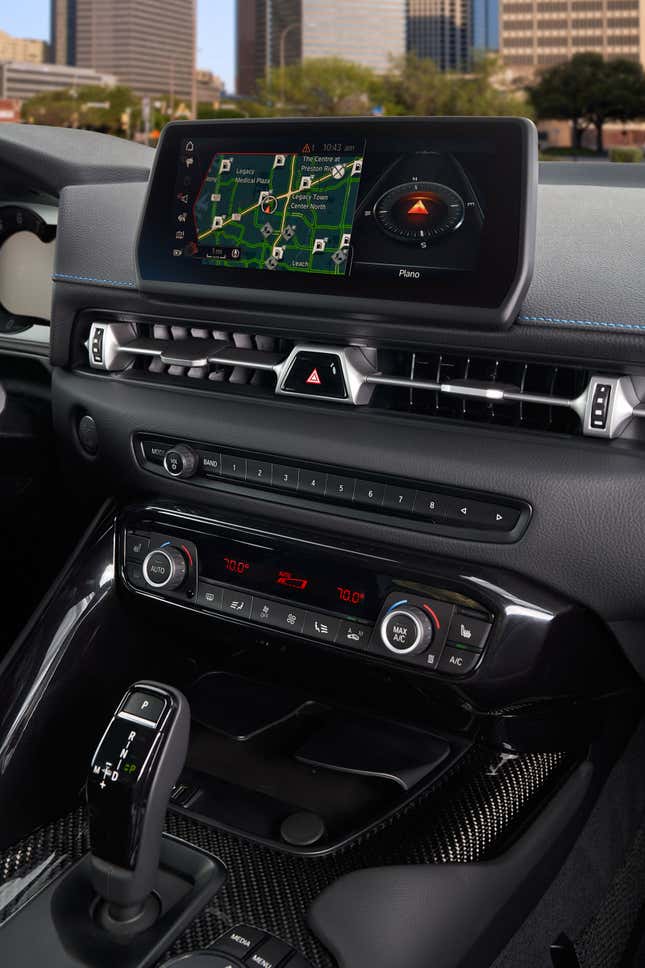
Fair disclaimer: I have limited experience with iDrive, and every infotainment system has its learning curve. That said, the layout of this one could be better. The Supra’s display is wide but ultimately small and doesn’t always make the best use of space. Screens and menus you’ll likely be returning to with frequency, like media controls, are buried several taps or clicks of the wheel into the software. And then there’s the digital instrument cluster.
On a long trip like ours, estimated range and mileage are important to be aware of. For the life of me, I couldn’t figure out how to access either. That’s on me, because while I thought I’d pushed every button in a desperate attempt to toggle the information shown on the screen to the right of the tachometer, I apparently missed the tiny one on the end of the turn signal stalk. I’m still not sure why the control for that was shoehorned there and not baked into one of the 20 inputs on the face of the steering wheel, but I digress.
The real head scratcher was the vast expanse of real estate on that instrument cluster display that seemingly isn’t used for anything. It remained blank for the entirety of our time with the car — puzzling, because that certainly wasn’t the true of the new M240i I recently drove, or any of BMW’s recent vehicles. There weren’t any swappable modules or information pages to stash there, though YouTube tells me there is a secret menu of digital gauges that can be accessed by pressing and holding the trip odometer reset button for like 30 seconds, then inputting the last six digits of your VIN. Weird.
Then again, the Supra’s simplicity relative to the Z4, M240i and other speedy BMWs deserves praise. As much as I like tech, I never know what to do with an assortment of driving modes. A singular Sport setting — one — is really all I’d ever ask for. And when you turn Sport Mode on in the Supra, which you do by pressing a big button whose purpose is clearly defined and obvious, you feel the difference in a multi-sensory way. The engine note deepens, the exhaust pops and burbles more. If you’re at speed, the transmission will probably drop three gears, which makes everything louder in a different sense but also sharpens up the throttle response. Auto stop-start turns off as well, which is a little shaky in this car, all told.
While I haven’t driven a Z4 myself to compare the Supra against, I fortunately do have some experience with the M240i. I reckon that car might be this Toyota’s true rival. After all, the M240i is a fixed-roof coupe built on BMW’s modular CLAR platform, which shares some bones with the Supra; it has the same B58 turbocharged three-liter straight-six, producing the same 382 horsepower; and at $49,545, it’s closer in price to the Supra’s $51,640 floor. (The good Supra, I mean; I’m still pretending the 2.0 doesn’t exist.)
I like the M240i a lot. But it’s 500 pounds heavier than the Supra, on account of its all-wheel-drive system. It’s ugly. It technically offers more cargo room but much of that is occupied by unusable back seats, plus the Supra’s trunk happens to be surprisingly roomy.
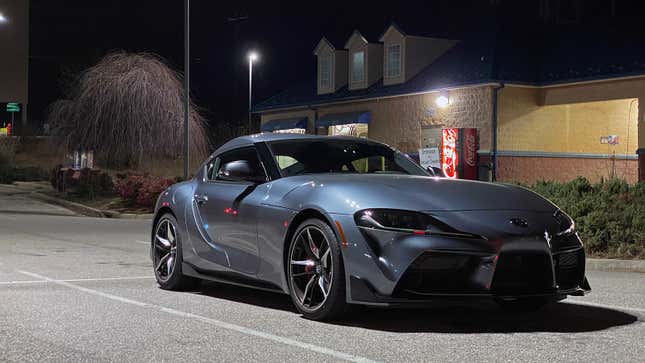
The more I’ve thought about it, the more certain I’ve been: Why wouldn’t anyone just get the Supra?
If you really care about squeezing every bit of utility out of a car ostensibly purchased for fun, a two-door coupe is a poor choice. Growing up I swore by the two-door M3, until I reached an age when I realized it’s pointless to drive a sedan-sized car with a fewer-than-sedan quantity of doors. That was the moment I knew I’d crossed the threshold into adulthood. If you’re already considering a 2 Series but don’t need all-wheel drive, just go all in. Commit to the bit. Get the more playful car with looks that actually match the joy it gives you, the driver. And should Toyota finally come through with that rumored manual, well then — the choice becomes really obvious.
Correction: An earlier version of this article stated the Toyota Supra and BMW Z4 use the same CLAR platform as the G42 2 Series. While the platform the two sports cars use is derived from CLAR, it’s not exactly the same. This has been corrected and we apologize for the error.
